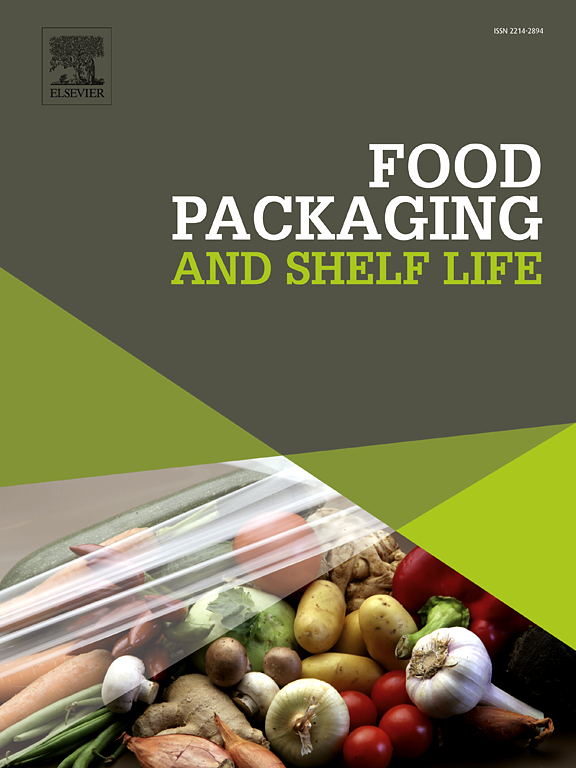Enhanced extraction of bioactive compounds from tea waste for sustainable polylactide-based bioplastic applications in active food packaging
IF 10.6
1区 农林科学
Q1 FOOD SCIENCE & TECHNOLOGY
引用次数: 0
Abstract
Active and sustainable food packaging materials were prepared through solvent casting, by blending tea waste (TW) extract rich in bioactive molecules with a neat polylactide (PLA) polymeric matrix. The optimization of tea waste extraction using a response surface methodology allowed achieving efficient yield and high phenolic content, which significantly enhanced the antioxidant properties of the resulting bioplastics. TW extract incorporation into PLA films increased UV-blocking capability, while keeping the oxygen permeability performance. Mechanical testing revealed improved ductility and toughness in TW extract-containing films compared to pure polylactide film, ascribed to the plasticizing effect of TW polyphenols. Food packaging assays showed effective moisture retention, comparable to low-density polyethylene (LDPE) plastics, antioxidant activity, and excellent bacteria barrier properties allowing the use for food packaging applications. Moreover, migration tests and detection of non-intentionally added substances (NIAS) allowed to establish the safety and regulatory compliance of these bioplastics.
从茶叶废弃物中提取生物活性化合物,用于可持续聚乳酸基生物塑料在活性食品包装中的应用
采用溶剂铸造法,将富含生物活性分子的茶渣(TW)提取物与聚乳酸(PLA)聚合物基质混合,制备了具有活性和可持续性的食品包装材料。利用响应面法对茶叶废弃物的提取工艺进行优化,得到了收率高、酚类含量高的生物塑料,显著提高了生物塑料的抗氧化性能。TW萃取物掺入PLA膜中,在保持透氧性能的同时,提高了膜的防紫外线能力。力学测试表明,与纯聚乳酸膜相比,含TW提取物的膜的延展性和韧性都有所提高,这是由于TW多酚的增塑性作用。食品包装试验显示有效的保湿性,可与低密度聚乙烯(LDPE)塑料相媲美,具有抗氧化活性和优异的细菌阻隔性能,可用于食品包装应用。此外,迁移测试和非故意添加物质(NIAS)检测允许确定这些生物塑料的安全性和法规合规性。
本文章由计算机程序翻译,如有差异,请以英文原文为准。
求助全文
约1分钟内获得全文
求助全文
来源期刊

Food Packaging and Shelf Life
Agricultural and Biological Sciences-Food Science
CiteScore
14.00
自引率
8.80%
发文量
214
审稿时长
70 days
期刊介绍:
Food packaging is crucial for preserving food integrity throughout the distribution chain. It safeguards against contamination by physical, chemical, and biological agents, ensuring the safety and quality of processed foods. The evolution of novel food packaging, including modified atmosphere and active packaging, has extended shelf life, enhancing convenience for consumers. Shelf life, the duration a perishable item remains suitable for sale, use, or consumption, is intricately linked with food packaging, emphasizing its role in maintaining product quality and safety.
 求助内容:
求助内容: 应助结果提醒方式:
应助结果提醒方式:


